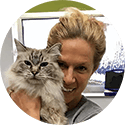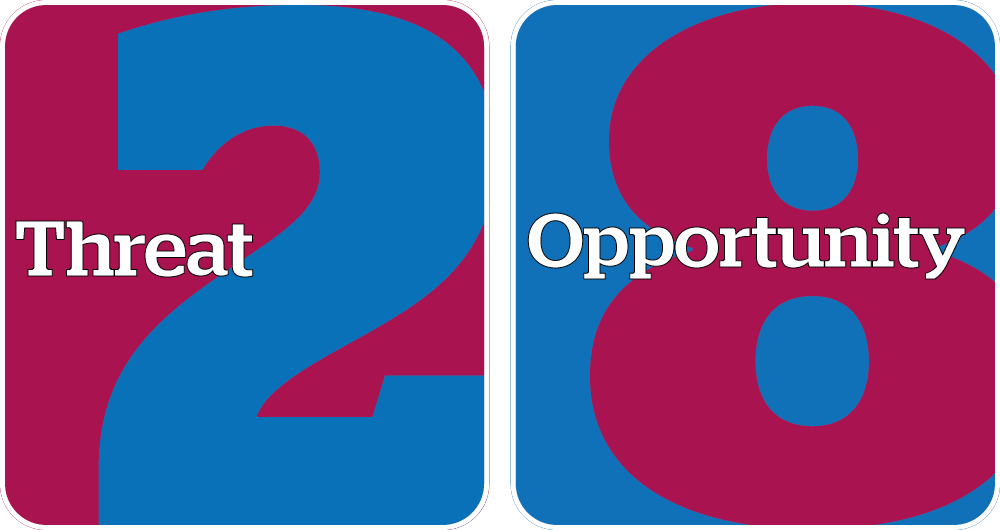15 Jul 2022
Our series exploring six core dynamics shaping the veterinary profession today and in the future concludes with a discussion that revisits the five previous topics and considers the impact of the coronavirus pandemic.

 Almost five years ago the Big 6 project broke new ground with a series of hard-hitting articles focused on the six core dynamics shaping the veterinary profession at that time.
Almost five years ago the Big 6 project broke new ground with a series of hard-hitting articles focused on the six core dynamics shaping the veterinary profession at that time.
Now, Big 6 is back, with a series of in-depth features and long-form podcasts to bring Vet Times readers exclusive insights and analysis about the dynamics driving the sector today, and in the future…

Since the turn of the century, the veterinary profession has been shaped and remodelled by the irresistible impact of many powerful dynamics. Some of these dynamics have brought – and continue to bring – unwanted change and disruption; others have delivered opportunities for innovation and evolution within the sector.
The coronavirus pandemic has accelerated many of these forces of change, with COVID-19 compelling practices and their people to respond in ways that have not only highlighted and exacerbated existing problems, but also pointed towards new possibilities and potentialities.
It is against this backdrop that Vet Times is rebooting the Big 6 project – an expert discussion forum that broke new ground when results were first published five years ago in sister title VBJ.
The premise of the project is to put six core areas of the profession under the spotlight to examine some of the driving forces shaping modern veterinary practice.
Our ambition across this monthly article and podcast series is to not only provide an insight into how things currently stand, but also produce a road map for the future.
To help us achieve that ambitious goal, Vet Times has been hosting a series of expert forum discussions featuring vets, business leaders, and key opinion leaders from both inside and outside the sector.
The previous five articles have covered transformational technology, client care, engaging employees, finance and regulation, and operational opportunities, and, for this final instalment, we revisited these topics and asked our panel the question: “Where do we go from here?”
We asked former RCVS president and IVC chief medical officer Amanda Boag, veterinary business consultant Alan Robinson, practice owner Lorna Clark, Purina’s scientific affairs manager Libby Sheridan and innovation expert Greg Dickens to help us find the answer.
The topics discussed in our final live forum – which is also available in full as a podcast – covered the previous parts of this series: transformational technology, client care, engaging employees, finance, regulation, and future opportunities.
 Lorna Clark
Lorna ClarkLorna is a practising vet, author and practice owner of Pinfold Vets in Leicestershire, which was recently named Petplan’s Practice of the Year.
 Alan Robinson
Alan RobinsonA vet who owned a successful mixed practice for more than 20 years, Alan is now a director of Vet Dynamics, an independent business consultancy providing tailored resources for practice performance, business intelligence, team engagement, and leadership and culture.
 Amanda Boag
Amanda BoagAmanda is IVC Evidensia chief medical officer, former president of the RCVS, and founding president of the European College of Veterinary Emergency and Critical Care.
 Greg Dickens
Greg DickensA veterinary surgeon and innovation consultant with Innovia Technology. Greg has authored numerous articles on the subject of innovation in the veterinary sector.
 Libby Sheridan
Libby SheridanLibby worked in mixed and small animal practice then set up her own company, Mojo Consultancy, before joining Purina Petcare as scientific affairs manager for the UK and Ireland.
Technology has been transforming the veterinary sector for decades, with practice management systems, laparoscopy and diagnostic imaging just some of the many developments to have had a significant impact.
But what are the advances likely to transform the sector over the next five years? Since the start of the pandemic in March 2020, telemedicine has been the technology that has perhaps been most transformative, but the emergence of things like wearable tech, 3D printing, AI and big data are all likely to deliver change at a pace never seen before.
And as Innovia’s Greg Dickens explained, it is the job of the profession and its regulators to try to keep up. “Let’s start with telehealth – as in evolution; as in business, you cannot move backwards,” he said.
“If you have started doing telehealth to deal with the pandemic, you can’t undo that. And if you keep doing that, you’re going to outcompete your competitors, so they are forced to do it as well; that isn’t going anywhere.
“The same goes with wearables. If you’ve started any sort of foray into gathering information from the home then that cannot go backwards. Regulation has to catch up, but the tech’s already there. The regulation needs to be there and the business models need to fit, as we haven’t really got a choice.
“There’s stuff where we do have a choice, like 3D printing – that’s still more than five years away [in general practice], but we might start seeing the very beginnings of it in five years’ time. But a lot of this doesn’t require new technology, advances in practice management, various types of diagnostics; it’s a regulatory issue, not a technical issue. And I would hope that as an industry, we can be flexible enough to get that moving well within five years.”
Libby Sheridan added: “I agree – what we need to sort through are the regulatory, legal and organisational issues; these are probably the biggest factors. We know that even with the NHS, the plan is to offer a digital option to all patients by 2024. And while the technology might be there, there are huge number of barriers that still don’t make that feasible. Some are people barriers and so forth, but a lot of it is about integration with other practice systems and so forth. So, it’s very, very complex, but the technology will be moving forward, and we cannot go backwards with it, but there’s an awful lot more pieces to that puzzle.”
One of the pieces of that puzzle will always be the face-to-face examination, but vets will increasingly be expected to engage with their client base in new ways, according to Amanda Boag.
She said: “The role of face-to-face consultations and examination is, I don’t think, ever going to disappear, but I guess what I’m really keen on is that as technology evolves, the veterinary profession does, too. We’re part of wider society, and those people are getting used to seeking advice and support for everything they do in a digital world.
“I would hate for our profession to get left behind by not embracing it and working out where it can fit in. I hear a lot from my younger graduates that they get frustrated by clients going to “Doctor Google”. But we, as a profession, must find out how to engage with digital forms of supporting our clients and our customers so they engage with our profession early – potentially before they need to come into that physical exam.
“I’m also really excited about the opportunities presented by technology for supporting younger vets. There’s fantastic stuff coming out of human medicine about supporting less-experienced colleagues, and even internationally, when you have more-experienced vets who are physically remote from the less-experienced person.
“That technology can really help and give confidence, and improve care and improve the well-being of the professionals as well. I don’t know where we’ll be in five years, but I think we are on a journey and I would love it if our profession embraced that journey.”
That journey is likely to continue delivering opportunities for practices to expand their range of services and their terms of engagement, while potentially changing the relationship between pet owners and their vets.
Expanding on this, Alan Robinson said: “Technology gives practices the opportunity to expand their capability by doing things, once considered external, in-house. We can dial in experts; we can dial in specialists; we can dial in diagnostics. We can also send out data in its own right.
“What it can do for the vet is, instead of being the purveyors of all knowledge, we become the curators of more knowledge, and that’s a harder gig in my mind, but one that we have to adapt to.
“When we come to look at the training of vets and how we do it, I think it’s a different mindset that needs to curate that level of data coming into us. That will be from wearables, it will be from the other data sources, all these things will be there eventually; we’re in a transition phase.
“Integration is still the biggest bugbear at the moment, but that will change – it is changing as we sit here and it’s getting faster and faster year by year. And what we’re going to see in the next five years is a dramatic shift that we probably haven’t seen in the past.
However, Lorna Clark made the point that there could be a risk of leaving people behind in the rush to adopt new approaches that might not always be welcomed by all clients.
She said: “For someone who’s in practice, five years actually isn’t a particularly long time. The technology is there, but actually, you’ve got to look at the demands of the people whose animals you’re treating. Yes, we have the younger generation, but there’s still an awful lot of people with pets who are older and don’t want to engage with the technology, and would much rather have face-to-face appointments.
“The same with the wearables – I know we can do all this stuff, but to say in five years that dogs wear diagnostic collars and the collar knows before the owner does, if the pet’s unwell – I mean, all of that in some ways is just slightly bonkers.
“I think some of this technology is great, but I think we are progressing at a slower rate; an awful lot of people just want a face-to-face conversation with their vets, and they want their vet to put their hands on the animal because there’s so much more to it than just making a diagnosis.”
“As in evolution; as in business, you cannot move backwards.”
Greg Dickens
Image © Tierney / Adobe Stock
Aside from ensuring the nation’s animals received the care they needed during the pandemic – particularly through the various lockdowns – practices had to find new ways to maintain their relationships with the people who owned them.
Managing the needs of clients has always been a challenge, as is predicting how those needs are likely to evolve and change over time – especially in a world where there is now a constant need for instant information.
On this, Lorna said: “I think accessibility to the information clients want is key because if they can’t get through to the vets and get an answer, that’s when people are going to start Googling. I think it is important to have a few good communication streams in your practice that really work and you don’t need to think too far outside the box, if that’s not your bag. But providing those income streams are there, if people find it easy to get through to someone to get the information they need, if it is made accessible to them, if they trust the source, then people will come to you before Google.”
Greg added: “There may be another way to think about this one, which is not just what information is available and what’s needed, but how easy is it to create a practice-wide, perfectly integrated, incredible easy-to-use communication suite? At some point, some provider is going to crack that perfectly – with a really attractive pricing model; with a really easy-to-download news app, and it’s going to spread like a wildfire. It’ll go through the industry in three years, I’d guess. You’ll be amazed how rapidly you get adoption when somebody cracks the UI [user interface] and the model.”
The most significant element of the digital age has been the sheer amount of data now generated in almost every sphere of life. Conservative estimates suggest the amount of data more than doubles every two years – a phenomenon that is going to have significant impacts for clients and their practices; not least in the field of preventive health.
On this point, Amanda said: “As we get better data, I think we’ll be able to refine when and where those kinds of tools should be used. I think there’s always going to be segmentation of the pattern in the population from those who really want that preventive health care and, to be honest, they’d probably welcome monthly check-ups with their pet, through to those who really only do want to reach out for veterinary help when they’re really, really, really worried.”
Alan added: “Algorithms can actually make data diagnostic – ‘Is it moving too much; too little?’; ‘Has the temperatures gone up?’ That leads on to predictive analytics, so it starts to say: ‘If this is happening, in the future, we can expect to see this?’
“In a few years’ time, with these prescriptive analytics, you can democratise things like preventive health care and when it’s democratised, it gets cheaper and cheaper, and cheaper.
“Already, preventive health care has been commoditised to the point it’s now in a pet health club or a pet health scheme – which are products, mostly, not so much services – but as you add in more services; more predictive data, you can actually make that free and it becomes a freemium model and that’s when you might get a shift in the way practice can work and things might work differently.
“That takes us back to the real basics of client experience, rather than client care, and that relies on four things: ‘What’s it cost or where’s the value?’; ‘What’s the convenience?’; ‘Am I getting the care?’; ‘Am I getting the compassion?’; And it comes back to human factors once again.”
For many practices, preventive health already forms a significant part of their revenue stream, including at Lorna’s award-winning practice, Pinfold Vets in Nottinghamshire.
She said: “Preventive health is a big part of what we do, and I think people do have more time, energy and want to put some more finances towards looking after their pet nowadays than they used to. You will still get the ones that – you know the ones – we are only there when something goes wrong.
“But if you can provide the preventive services – we do nail clips, anal glands, weight checks and dentistry – it’s a great way of utilising nurses and works really, really well. But then, those services don’t even have to be free; people don’t mind paying for them. People don’t mind paying for these services; they’re quite happy to. They want the services there.”
Greg agreed: “The proportion of people who don’t mind paying for those services is likely to go up and up. We’re seeing a big upswing in the acceptance for preventive health spending in human medicine in the US at the moment. I don’t know whether or not that’s going to penetrate to the UK because of the effect of the NHS, but it’s likely to. And when it does, it’s very likely that there’ll be a knock-on effect to people’s attitudes to preventive health in their pets.”
“I think accessibility to the information clients want is key because if they can’t get through to the vets and get an answer, that’s when people are going to start Googling.”
Lorna Clark
Image © LIGHTFIELD STUDIOS / Adobe Stock
Poor well-being, burnout and high dropout rates were problems the veterinary profession had been grappling with long before coronavirus struck with such devastating effect in March 2020.
The sudden emergence of COVID-19 merely served to throw these issues into even sharper focus and further expose the cracks in a profession also struggling with a recruitment crisis exacerbated by the throttling impact of Brexit on the pipeline of EU vets coming to the UK.
Steps are being taken at every level to tackle these issues, with a flurry of new vet schools opening to help plug the labour shortage and a raft of industry-wide initiatives designed to improve the working environment.
But these measures will take time to take effect, which means all practices must take steps now to look after their people and provide not just the financial benefits, but the working environments they so richly deserve.
Amanda said: “It’s an employment market now where I think everybody – whether they’re large practices, small practices, charities, universities – are having to look at how they remunerate and look after their staff – not just their vets, but their nurses and support staff as well. And that’s the whole employment package. And I think that’s right, as wages have been stagnant for quite some time, so I think it’s right that that’s been looked at.
“Having said that it’s never going to be the only answer – you could pay as much money as you like, but if you have a horrible on-site culture, you’re unlikely to keep people for too long. During the next five years we shouldn’t forget that the culture of the sites, and the culture of the organisation is hugely, hugely, hugely important as well. Especially in ensuring that people stay and feel looked after, and are able to be their best selves at work.”
Alan added: “The real difference that’s got to happen is, Amanda mentioned, culture basically, but it’s got to be built in from the ground up – not bolted on from the outside. It’s not just throwing a few yoga mats in the back room and saying: ‘There you go guys, sort yourselves out.’
“We need intrinsic motivators to get to work; intrinsic ways of working – an intrinsic structural part of the business where people have more belonging, more psychological safety, more connection and more self-esteem being built through the ways they’re dealt with at work. I think there’s going to be grand world change in the structure of business – not just veterinary, but in others.”
And over the next five years the profession must meet the challenge of adapting to the very different needs of the next generation, too, as Libby explained.
She said: “Something does need to change and the thing we need to keep in mind as well – especially with these young graduates coming out – is that this world is just so much more connected now and their choice of what they can do is much, much bigger.
“There are all kinds of career options, but equally, I think there are career options within veterinary that are starting to unfold now, like telemedicine for one, or remote mobile clinics and so forth – I think we may well see these models being driven by the next generation.
“We know that a lot of people now are starting to become self-employed and so forth, and it might well be that graduates in the future are creating their own job opportunities in that virtual space as a vet and that could be a challenge to the traditional model when it comes to staffing levels.”
Lorna said: “Culture is easier to control and manage in smaller practices, so in a profession that is becoming more and more corporate, and the people that are leading or at the top so remote, it’s incredibly difficult.”
As a senior figure in Europe’s largest vet group, IVC, Amanda responded to this by making the point that creating positive cultures is a big challenge for all practices large and small – corporate or independent.
Amanda said: “I think our role is to foster that local leadership; support people to make the good decisions for their teams. You’re right – it can be very remote, but I can show you; I’m out there visiting places and seeing what is going on.
“I think what we can potentially do is create frameworks to support people to get the experience to do that [and create positive cultures].
“The other thing I would say is that we’re quite a small profession and subdividing us into any groups that compete with each other – like specialists versus generalists, or corporates versus independents – I just don’t think that’s helpful.
“There are good and bad employers; there are good and bad sites across the whole country and across the whole world, probably. The more we can do to lift everybody up, the better, I think, rather than subdividing and creating conflict.”
“The more we can do to lift everybody up, the better, rather than subdividing and creating conflict.”
Amanda Boag
Image © Guitafotostudio / Adobe Stock
One of the other big areas of conflict for vets has traditionally been finance – especially when it comes to discussing the issue of payment with clients. This has long been a stress point for many clinicians, but it is one that could be taken off the table entirely, according to Alan.
“The subscription model solves a lot of issues in veterinary practice and removes that discussion from money to another place,” he said. “It also frees up the mind space for clinicians to actually deal with what they have to deal with.
“There is a high demand for subscription services across a lot of industries, and there’s no reason that they won’t be accepted well in the veterinary – there will always be pay as you go, but subscription is likely to be a growing model during the next five years.
Libby added: “Subscription has got a lot of benefits in terms of continuity and animal welfare as well. It’s a great bonding tool for clients, and I do think it’s a model that potentially solves quite a lot of problems.”
However, Greg pointed to the fact that in the US and Asia some companies were starting to see significant backlash against subscription models.
He said: “They are seeing this just because they make you sit down and do the mathematics of ‘Is this cheaper or is this more expensive in the long run?’ And just that act of burdening people with that five seconds of mental mathematics slightly irritates people and that slight irritation is enough to leave a slightly bad taste in the mouth. Procter and Gamble, and a few others have got past this by making a joke of it, but they’re multibillion-dollar companies.
“Maybe it won’t be a problem in five years, or maybe it’ll be those practices that have got a sense of humour that will get the best out of a subscription model.”
As well as subscription models as a guaranteed source of revenue, Alan concluded by adding that increasing amounts of data lead to new business opportunities over time.
He said: “It also doesn’t have to be their binary decision, as in you pay subscription or you’re paying pay as you go – there are other payment models there as well.
“But back to the previous discussion around data – if you monetise data, that can be a subsidised income for a practice as well. I’m not suggesting it – it’s a bit dystopian even to think about it – but this is the way data goes.
“Once you build a big database, people are willing to pay for that and people are willing to trade money for that, and that becomes subsidised income stream – particularly on the back of technology. I’m not suggesting that’s what we do, but you can see it happening for the future. It’s very much a ‘What if?’ scenario. And some of the ‘What ifs?’ aren’t particularly appealing, but they do solve a lot of the problems.”
When it comes to the veterinary business model, one of those problems has traditionally been an over-reliance on selling products and medicines, rather than charging appropriately for professional time.
And that needs to change, as Amanda explained: “I think it is very important that we really support people to value their time in their professional services. Because I think, historically, maybe people weren’t as confident to charge their time as a veterinary surgeon or a veterinary nurse.
“That’s something that I really spend a lot of time talking to our younger graduates about, feeling confident to charge for their services and their time – we should be valuing that more.”
“Subscription has got a lot of benefits in terms of continuity and animal welfare as well… I do think it’s a model that potentially solves quite a lot of problems.”
Libby Sheridan
Image © ink drop / Adobe Stock
The RCVS recently announced plans to consult on proposed reforms to its “under care” guidance, 24-hour emergency cover obligations and the requirements imposed on limited-service providers – part of a wider review by the college of the rules that determine how the veterinary professions are regulated.
Reviewing the under-care guidance and any potential changes in the rules around remote prescribing could be potentially made without new legislation, but others – such as regulating allied professionals and strengthening the regulation of vet nurses – would require significant changes to the Veterinary Surgeons Act (VSA), which is now nearly 60 years old.
Amanda said: “I don’t think anybody would be in any doubts that to have our regulatory framework – put together in 1966 – is suboptimal in 2022 as so much has changed since then. I think, the legislation working party did a great job working with the BVA of putting a framework forward for legislative reform, but we are reliant on parliamentary time to do that.
“Part of the proposals would be to extend the categories of professional that the RCVS could regulate to bolster vet nurses, but also, to potentially bring other allied professionals, whether that be bovine foot trimmers and dentists, and so on, who really work alongside vets.
“At the moment it is a bit of a grey regulatory area and I think it would be genuinely of benefit to the profession to put that all into a clear framework. I think that framework would ultimately benefit animal welfare and I would really hope to see that in the next five years.
“Also, I would like to see the veterinary nurse profession given a sound regulatory underpinning, as vet nurses were not even thought of when the VSA was drafted almost 60 years ago and yet the profession has come so far.”
On the controversial topic of remote prescribing, Amanda added: “We’re an evidence-based profession, and we need to look at what the animal welfare benefits are and there being no regulation around remote prescribing seems like it would probably have a detrimental effect.
“But having absolutely no remote prescribing I think potentially has detrimental effects on some patients’ welfare and accessibility of care, too. This is actually separate to the legislation work, of course; the under care review and the remote prescribing comes under the veterinary medicines regulations, and then to the college, rather than requiring parliamentary time, so these are issues that could move faster.
“But let’s actually look at the evidence and then make our judgements based on that. And there’s great opportunities – there’s a trial going on in France right now, the Nordics have had remote prescribing for some time, there are things happening in North America – let’s take the evidence and make the best judgement for the UK.”
Libby added: “They’ve had this conundrum for quite some time in the US, before we started looking at it here in the UK, and it’s still very, very split there. I think the AVMA [American Veterinary Medical Association] is very cautious about it – it says that there should be an existing patient-client relationship.
“But at the same time, then it’s in opposition to what the state boards are saying, and in some states, it is already happening. Some of the state boards now are saying you can develop that relationship – that formal agreement through virtual means – so that you don’t have to have your hands on that animal. But it is a complicated picture and I think it is something that is probably going to be still ironing itself out in five years’ time.”
“I don’t think anybody would be in any doubts that to have our regulatory framework – put together in 1966 – is suboptimal in 2022.”
Amanda Boag
Image © MicroOne / Adobe Stock
To close the debate, we asked all of our panellists for their thoughts on the future, and how optimistic they felt about the opportunities and some of the threats the veterinary profession might face during the next five years.
Greg said: “Five years is exactly halfway between Bill Gates’ quote about people massively overestimating the change in two years and underestimating the change in 10. I think there’s going to be great change and it will go in the right direction – regulation should try to keep up.”
Summing up her thoughts, Libby said: “We might get more disruption in the industry as it can be difficult to see what’s around the corner. From the technology point of view, I think that is evolving – it’s predictable in a way, but maybe some of the emerging customer service or consumer models might disrupt things.”
Alan said: “The veterinary profession is absolutely chock-a-block full of really bright, optimistic, creative, compassionate people who can really take it forward it the next five years.
“Unfortunately, it is also a bit hamstrung with a legislation mindset and just conservatism with the small c, and if we don’t take advantage of the opportunities out there, someone else will, and I think that’s what should scare us.”
Also with a positive take, Amanda said: “I am an inherent optimist. We have entered the new digital age, but that shouldn’t scare us as the profession has reinvented itself before.
“It is clear we’re all going to have to work out how to reinvent ourselves for the digital generations of the future. And I think our younger graduates are quite rightly asking for good working conditions, good culture and so on, and that’s also a real driver.
“I was with a group from our graduate academy recently and there was so much energy and passion, and enjoyment of the profession in the room that I can only be optimistic for the future.”
And with the final word, Lorna said: “Yeah. I mean, the whole point of this session was sort of moving on post-COVID. I think we have to look back as a profession and think how resilient we’ve been, and we should pat ourselves on the back for that.
“As a profession, we should use that as a springboard going forwards and embrace the changes that need to happen.”
“If we don’t take advantage of the opportunities out there, someone else will, and I think that’s what should scare us.”
Alan Robinson
By way of a conclusion to this fifth article, we asked all our panellists to provide us with a threat and opportunity rating for COVID – where do we go from here? We’ve taken all our panellists’ responses to produce an overall rating…

Do you agree with our panellists’ scores? Answer our quick polls below: